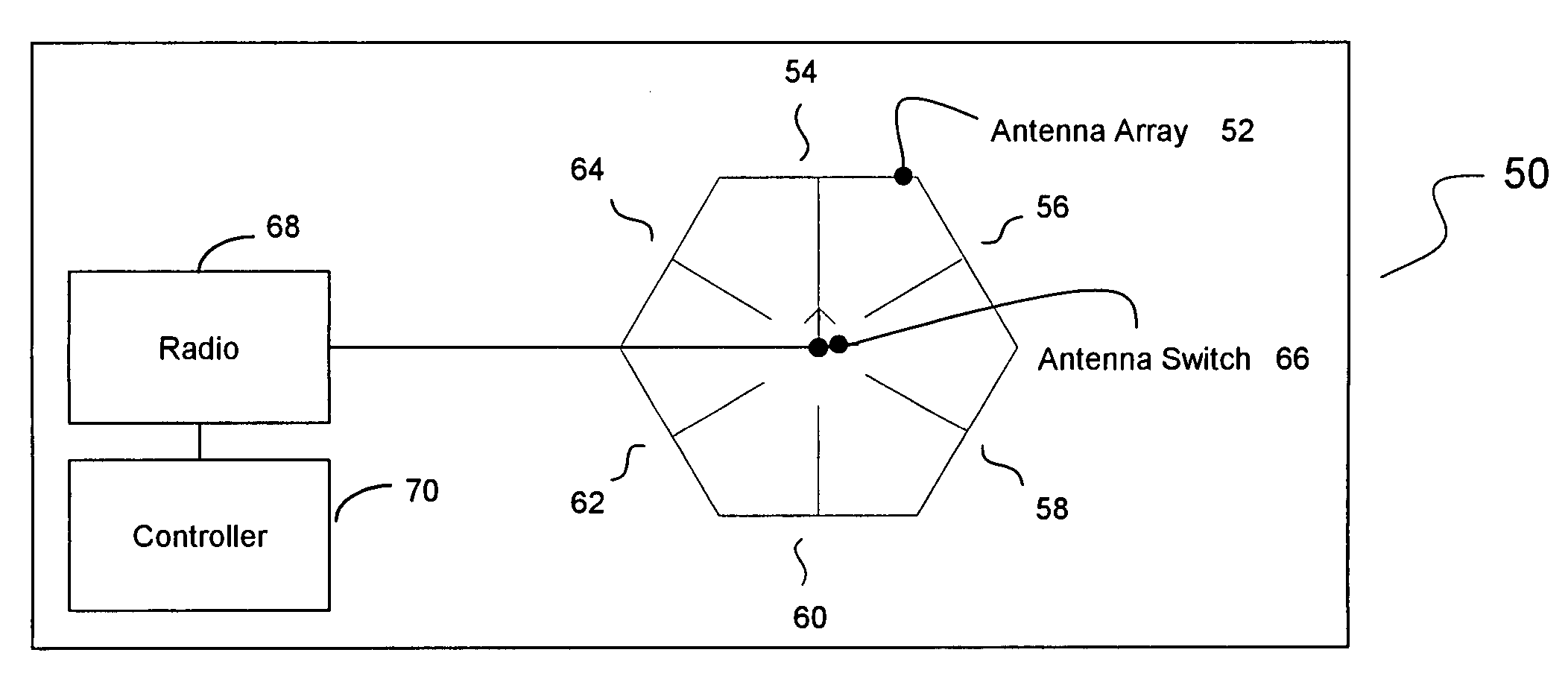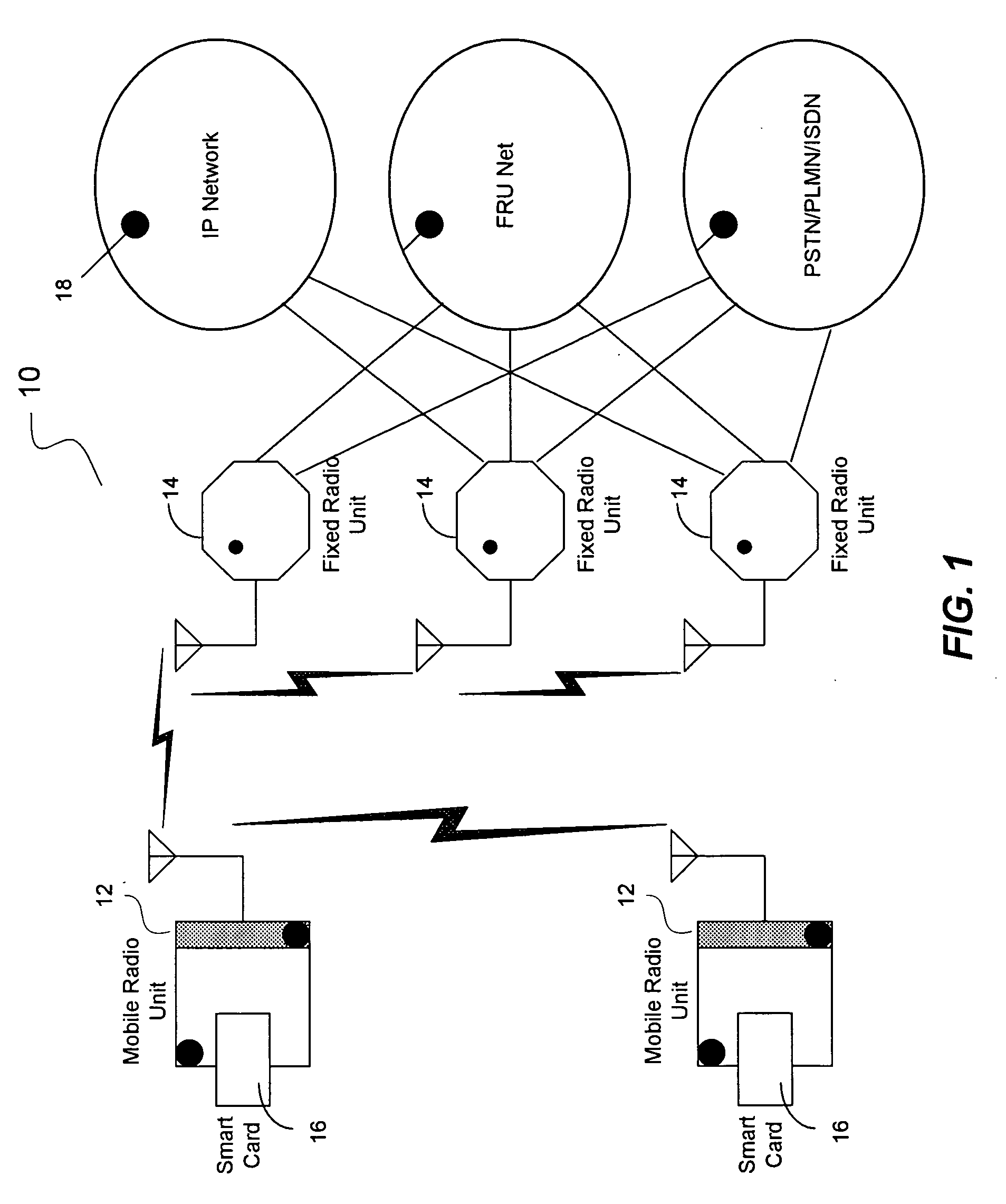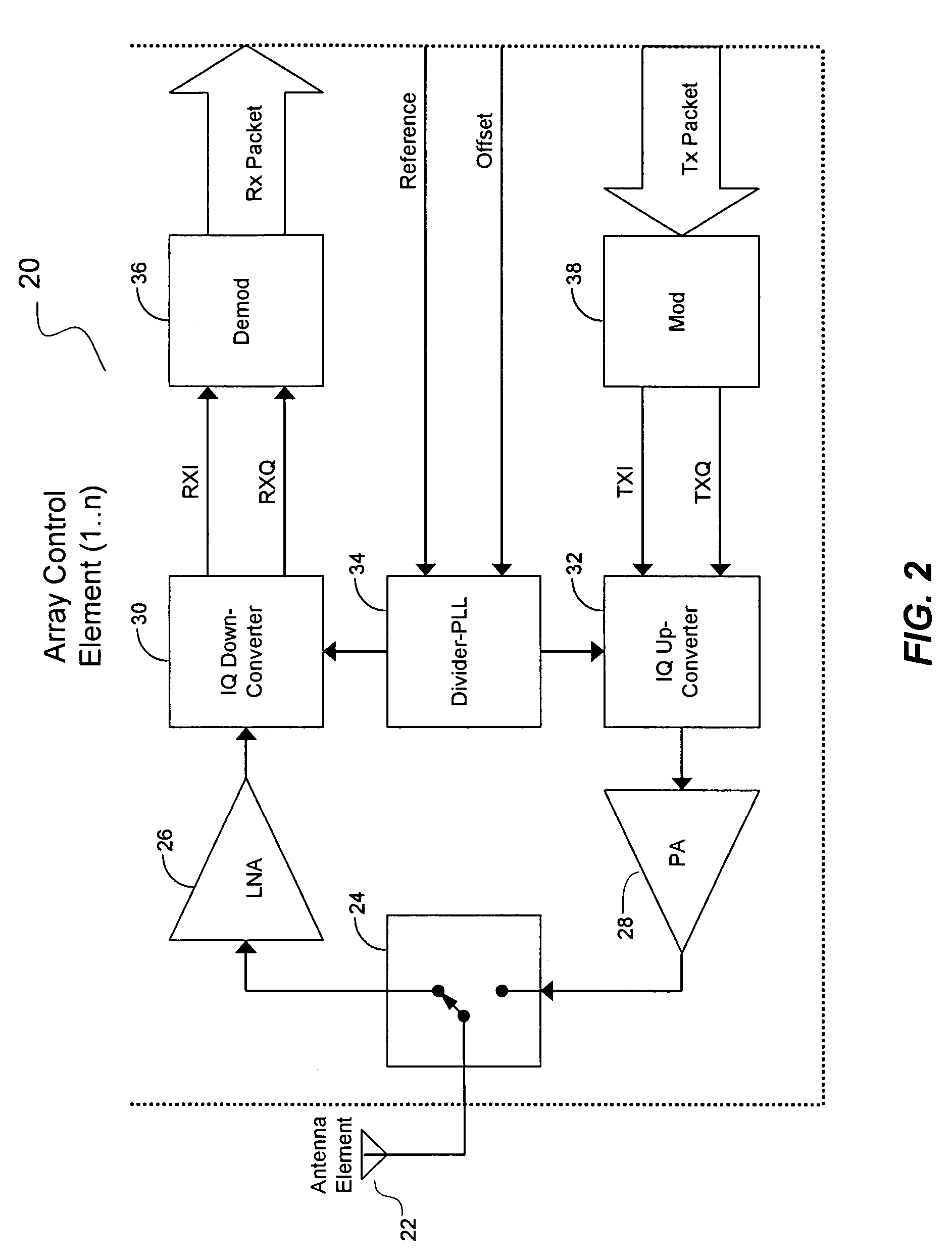Method and system for determining direction of transmission using multi-facet antenna
a multi-facet antenna and antenna technology, applied in direction finders using radio waves, instruments, substation equipment, etc., can solve the problems of difficult to provide, inability to gain access to corporate ethernet networks or internet connections, and difficulty in obtaining communications channels in wireless networks. , to achieve the effect of reducing power consumption, increasing receiver sensitivity to specific units at known locations, and reducing distan
- Summary
- Abstract
- Description
- Claims
- Application Information
AI Technical Summary
Benefits of technology
Problems solved by technology
Method used
Image
Examples
Embodiment Construction
[0040] The present invention in the form of one or more exemplary embodiments will now be described. FIG. 1 is a simplified schematic block diagram illustrating one exemplary embodiment of the present invention. In this exemplary embodiment, the network 10 includes a number of mobile radio units (each an MRU) 12 and a number of semi-fixed or fixed radio units 14 (each an FRU). Based on the disclosure and teachings provided herein, a person of ordinary skill in the art will appreciate that other types of devices that are able to send and receive signals, i.e., transceivers, can be used as MRUs or FRUs in accordance with the present invention.
[0041] In one exemplary embodiment, the MRU 12 is a user portable device that is capable of handling wireless communications. The MRU 12 includes two types of high bandwidth radio, one is used for long range relay communication and the other for shorter range local communication. The MRU 12 is capable of communicating with nearby MRUs and FRUs 1...
PUM
 Login to View More
Login to View More Abstract
Description
Claims
Application Information
 Login to View More
Login to View More - R&D
- Intellectual Property
- Life Sciences
- Materials
- Tech Scout
- Unparalleled Data Quality
- Higher Quality Content
- 60% Fewer Hallucinations
Browse by: Latest US Patents, China's latest patents, Technical Efficacy Thesaurus, Application Domain, Technology Topic, Popular Technical Reports.
© 2025 PatSnap. All rights reserved.Legal|Privacy policy|Modern Slavery Act Transparency Statement|Sitemap|About US| Contact US: help@patsnap.com



